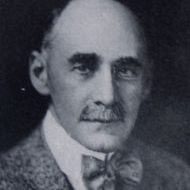John Smeaton (1724-1792)
Butchart Gardens developed as a direct result of Robert Butchart going into the Portland Cement business in 1885.
John Smeaton (1724-1792) comes into our Butchart Gardens History because he developed the first modern cement. John Smeaton’s work led to the creation of Portland cement, which Robert Butchart and the Vancouver Portland Cement Company were manufacturing at Tod Inlet.
Here is an excerpt from Chapter 3 of our Butchart Gardens History:
“Cement has been known for centuries. Many ancient Egyptian and Greek buildings were erected using lime mortar and plaster surprisingly similar to modern mortar and plaster. The ancient Romans used a cement made by mixing lime with volcanic ash. But after the collapse of the western Roman Empire, the Roman cement making techniques were largely forgotten. Medieval European builders continued using lime mortar similar to that used by the ancient Greeks and Egyptians.
No technological advances were made in cement production until 1757, when an English engineer named John Smeaton was faced with the problem of building a lighthouse on Eddystone Rock, a dangerous navigational hazard off the coast of Cornwall. Eddystone Rock was submerged at high tide so the base of the lighthouse required a cement which would harden underwater. Finding no existing cement to fulfill this requirement, Smeaton tried to create one which would. After experimenting with different combinations of lime and clay, Smeaton succeeded in producing a cement which would not only harden underwater, but was also far stronger than any other cement then available. Smeaton’s research was not published until 1791 but, following its publication, it had an immediate effect; a cement manufacturing industry quickly sprang up in England and France, making what would now be called a “natural cement.”………”
Here are some sites with more information on John Smeaton:
Would you like to leave a comment or question about anything on this page?
